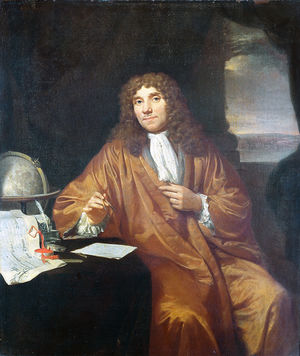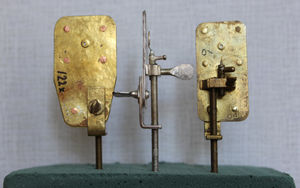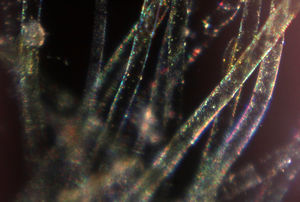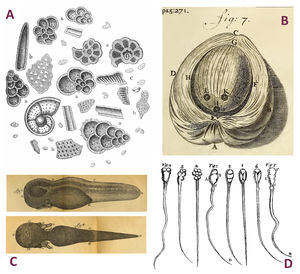Van Leeuwenhoek is the Delft Linen merchant who discovered most of the microorganisms known today (except fungi and viruses) as well as many other things (eg blood circulation, the structure of plant and animal tissues, crystal structure, etc).
People have suggested that he and the painter, Vermeer, were friends, but this cannot be proved. He made his own remarkably simple microscopes (Figure 2). Largely because of the superb quality of his lenses, he was able to discover the existence of many unknown tiny structures. Eventually his friend, the Delft Physician Reijnier de Graaf (Figure 3), persuaded him to write to the Royal Society of London about his work. That first letter included details about the structure of mould, a bee and a louse that nobody had ever seen before. However, after improving the quality of their lenses, famous microscopists admitted that they could also see these things. The Royal Society was so interested in his work that they asked him to write again, and eventually made him a Fellow of the Society.
Van Leeuwenhoek continued research into a wide range of subjects (Figure 4) for the rest of his life. Some subjects were suggested by others including the Royal Society and the VOC, others just took his fancy. From his death bed, he even dictated a letter to the Royal Society about the disease that was killing him, now known as Van Leeuwenhoek’s Disease!
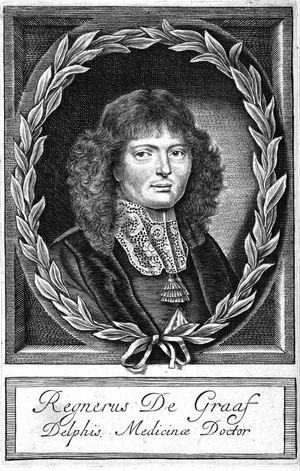
Figure 3. The Delft Physician Reijnier de Graaf

